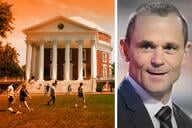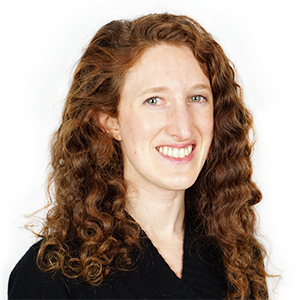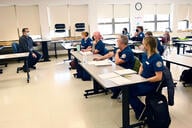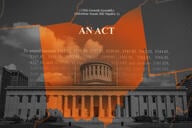You have /5 articles left.
Sign up for a free account or log in.
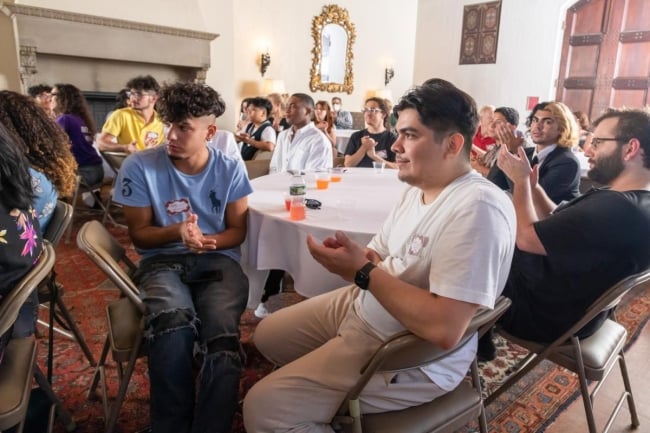
Vassar College is working to enhance its summer bridge program for community college students and expand it to other campuses.
Michael J. Okoniewski for Vassar College
Campus leaders at Vassar College are on a mission to bring community college students to liberal arts institutions.
They announced plans this fall to help 30 liberal arts colleges explore how to start programs modeled after Exploring Transfer, a 35-year-old summer bridge program for community college students at Vassar. Administrators will also expand access and make improvements to their own program, such as adding extra mental health supports, based on feedback from alumni and in collaboration with community college leaders.
The effort, called the Exploring Transfer Together initiative, is funded by a two-year grant from the ECMC Foundation, a national foundation focused on improving higher ed outcomes among underserved students.
The model of the Exploring Transfer program, which Vassar leaders hope to replicate, is that selected community college students live on campus, for free, for five weeks to experience dorm life and take classes together. The courses are co-taught by Vassar and community college faculty.
Elizabeth Bradley, president of Vassar College, said there’s a “thirst” among leaders of liberal arts colleges to build more robust pipelines from community colleges, but too many students see these institutions as remote or unattainable.
Building more bridge programs “would be such a win-win,” she said. “I think the liberal arts colleges win by being more engaged with the community, having the diversity of … community college students on their campus. And I think the student really wins because now their eyes are open. One of the major barriers is people themselves feeling like, ‘It’s so far away, I can’t even imagine it.’ But if you can just put that imagination in them, I think a lot would be able to achieve what their goals were.”
The initiative will involve at least eight site visits to community college campuses by Vassar administrators and a survey of participating liberal arts colleges to assess what supports they already have in place for community college students seeking to transfer and their readiness to establish their own bridge programs. Campus leaders will also arrange convenings of administrators from these liberal arts colleges throughout the two years.
Administrators see multiple advantages to the Exploring Transfer model. Bradley said the co-teaching model with Vassar and community college instructors not only helps students acclimate but also creates a learning opportunity for Vassar faculty members.
Vassar professors “really don’t teach community college students usually,” she said. “They don’t know how to balance the academic demands versus the nonacademic realities of community college student lives often.”
Campus leaders are also heartened by the academic outcomes of the program. A survey of students who participated in Exploring Transfer from 2008 to 2019 found that 70 percent had completed a bachelor’s degree, and an additional 20 percent were in the process of earning a four-year degree. These students are beating the national odds. Among community college students who intend to transfer nationwide, roughly 31 percent transfer, and only about 14 percent complete a bachelor’s degree, according to the Community College Research Center at Columbia University’s Teachers College.
Wendy Maragh Taylor, associate dean of the college for student growth and engagement and the principal investigator for the Vassar initiative, said she hears from alumni that “there’s this building of confidence that happens” over the course of the program.
Students come away thinking, “Maybe I can apply to Columbia, Cornell, yes, to Vassar, to wherever,” she said. “That’s really what we want.”
Building Confidence
Delilah Hernandez, who participated in the program in the summer of 2019, said that as a first-generation student, she hadn’t even heard of most of these institutions, including the one she currently attends, Cornell University.
“Even those conversations that may seem very intuitive for some families, it just wasn’t something that was really talked about for me growing up other than, you know, ‘Go to college,’” she said.
Her first experience in college was at the University of Illinois at Chicago. She felt lost navigating the large public university and failed out. Enrolling at Harold Washington College, a local two-year institution, and participating in the program at Vassar revived her confidence, she said.
Marie Dere, a former LaGuardia Community College student, said she had a similar experience. When she got into the Vassar program, she’d recently been invited to apply to Columbia University, but she was wavering on whether to do so, partly because she questioned whether she could succeed there. Her experience at the bridge program encouraged her.
“I found people who were really dedicated in telling us, even though we were first-generation, low-income, immigrants, we were deserving of being there and also we could do more with our futures and lives if we wanted to,” said Dere, now a senior at Columbia. “We just needed to push forward and not look back.”
She said it took time for that message to sink in for her and some of her peers. When she first got to Vassar, she felt “culture shock” and “impostor syndrome.”
“I felt so out of place because I had been propelled into this environment that was unknown to me,” she said. “You start doubting yourself. Am I here because I’m just filling up a quota, because I’m Black, I’m an immigrant, I’m a foreigner—or because I’m a capable student, because I’m smart enough to make it through here?”
Mildred Johnson, formerly a student at Westchester Community College, similarly felt some trepidation when she participated in the program in 2000. She was 42 years old, one of the oldest students in her cohort, and questioned whether she belonged. But she found herself engrossed in her liberal arts classes, and after the program, went on to earn a bachelor’s degree at Vassar, two master’s degrees from Johns Hopkins University and a doctorate from the Chicago School of Professional Psychology last year.
“I got a worldview,” she said. “I got a view of philosophy, a different way to think. It was a transformative moment for me, just the exposure and the expansion.”
A ‘Culture Change’
Feedback from alumni has prompted Vassar leaders to consider changes to their program, including more supports to foster a sense of belonging and more robust mental health services.
Mary Gallagher, president of Los Angeles City College, said she’s also discussing with Vassar administrators an augmented or virtual reality version of the Exploring Transfer program designed for students who can’t take five weeks to go to Vassar’s campus, like single parents, working students and students taking care of elderly family members. She noted that most community college students attend college part-time and are juggling other responsibilities.
“Students who don’t apply are probably even more interesting than the students who do apply,” she said. “When students in high school are encouraged to apply to selective liberal arts colleges, it’s because they’re very high achieving. It’s the skimming off the top.” But high school students who have academic talent but have lower grades because they’re working to support family or are in foster care or facing other challenges, “those students, when they make it, it’s remarkable … If those colleges have those students, they would enrich their classroom environment beyond anything they can imagine.”
Pam Eddinger, president of Bunker Hill Community College, said she doesn’t think the goal of the initiative is for liberal arts colleges to suddenly accept a swell of community college students. Realistically, these are smaller institutions that don’t admit high numbers of transfer students, she said. But she believes proactively examining and creating these bridge programs is a form of self-reflection on the part of these colleges and can help foment a “culture change” within higher ed at large.
“It’s beyond the older rhetoric of ‘this is a gift for the student to allow them to be someplace where they naturally don’t belong,’” she said. “The conversation feels different in that there is a clear acknowledgment that just fixing exclusion is not enough. It’s to truly embrace that there’s human potential at the community colleges that has been traditionally ignored. Even if a liberal arts college is willing to take 10 more students, but their attitude toward those students doesn’t change, nothing changes.”
She believes the Exploring Transfer Together initiative is a part of and an outgrowth of other changes happening in American society, such as the national racial reckoning that followed the killing of George Floyd.
“Liberal arts colleges are agile that way because they understand how to foster critical thinking, how to foster complex progression into a different space, how to iterate, how to learn how to learn,” she said. “All this talk about belonging, all this talk about diversity and inclusion and drawing talent from other parts of our society, would never have happened five years ago.”

